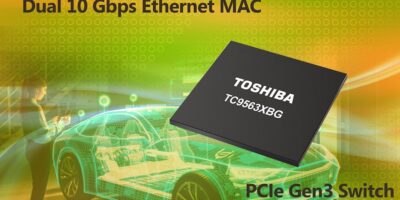Developers focusing on the Aurix TC4x microcontroller family by Infineon can use Tasking’s SmartCode software development environment.
The microcontroller family provides an upward migration path for the Aurix TC3x family. It features the next-generation TriCore 1.8 and scalable accelerators, including the parallel processing unit (PPU) as well as a single instruction, multiple data (SIMD) digital signal processor (DSP) to meet the requirements of various AI topologies, says Infineon.
The Aurix TC4x family supports developers in a range of automotive applications, including the future functional integration of domain- and zone-based E/E architectures. The microcontroller family can be used in electromobility and automated driving.
The Tasking SmartCode supports both the next-generation Aurix TriCore v1.8 instruction set and the PPU AI accelerator. According to Tasking, SmartCode is the only productive development environment with compiler that supports all architectures in the Aurix TC4x (TriCore compiler, SCR compiler, GTM compiler and PPU compiler).
Tasking SmartCode is also suitable for the development of software in safety-critical applications in accordance with ISO26262 up to ASIL D. It also meets the cybersecurity requirements of the new ISO/SAE 21434:2021 standard. Tasking offers users the associated safety/security manual so that no additional costs are incurred for tool qualification.
According to Infineon’s senior vice president, Automotive Microcontroller, Thomas Böhm: “With Tasking’s comprehensive software development tools, our customers can optimise system performance and qualify their systems quickly and cost-effectively for an ASIL-D safety concept”.
Tasking Germany provides embedded software development tools. It is headquartered in Munich, Germany.
Its development tools are used by automotive manufacturers and the world’s largest Tier 1 supplier to realise high-performance applications in safety-critical areas.
Volume production of the Aurix TC4x series is planned for the end of 2024. Samples of the TC49x were received by lead customers in 2022. The first productive version of Tasking SmartCode is available now.






